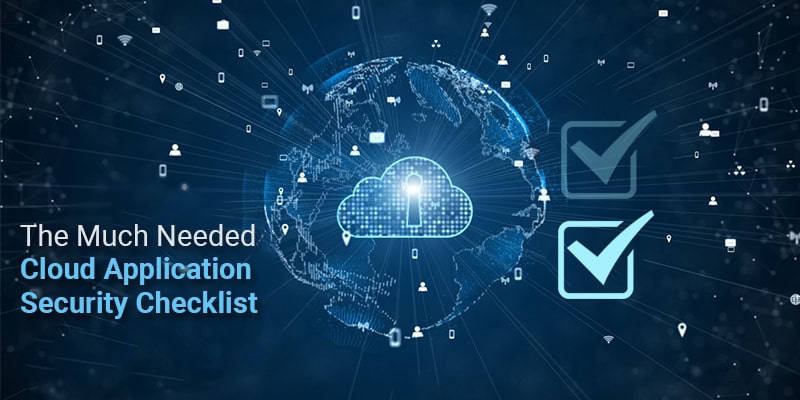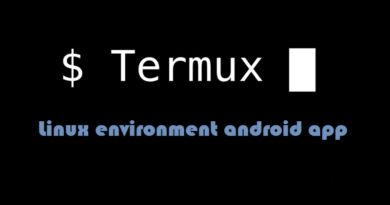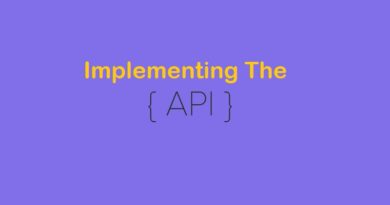The Much Needed Cloud Application Security Checklist
Cloud, the much known term for existing business organizations have let them evolve from scrap to heights with developed security. Adopting cloud not only helps businesses in a single way but provides zillion visible benefits that help in developing organizations.
From improved security, developed infrastructure to managed business needs, every small and large business rely on the cloud.
But before adopting cloud technology, the organizations must have a look at the security checklist
Manage SaaS usage
With the growing usage of SaaS in the workplaces, it is becoming increasingly difficult to keep a track of which applications are using cloud computing or which one has access to the organization’s cloud environment. It is almost impossible to know the permissions and security constraints related to the running applications and SaaS management becomes more difficult. Though it is easy for the users to access applications with open authorization but on the other hand it is inconvenient for IT security to handle open authorizations as it is unsecure.
It is advised to the users to prefer having a look at the required permissions and not believe in open authorizations. They can restrict access to the risky and non-usable applications, create a list of the sanctioned and unsanctioned applications or create a list of apps that are running in the background.
Have a defined password policy
The first and foremost step for a secure plan for any organization is a secure password. The organizations must know why passwords are important and what should they practice to keep a strong password.
We have all seen ‘ set up a strong password’ flashing on our systems? But how many of us actually try to keep the same? The organizations should ensure that their systems have a strong password. They must have a set definition of a perfect password for example- minimum and maximum password length, capital letter, numbers, signs and other necessary information to create a strong password.
If you’re setting the standards for the first time, be sure to run a check of current passwords to see whose passwords are out of compliance with the new standards. You can then force a password change through your admin console.When you set the criteria for the first time , make sure your existing passwords are reviewed to see what passwords are not consistent with the new guidelines.
Adopt multi-factor authentication
Multi-factor authentication helps in granting extra security to the systems, data and files. It requires users to take another necessary step after logging or adding a password to prove that you have authorized access. The process involves entering a code or solving a simple mathematical calculation or entering a code sent through SMS. The user just has to enter the essentials and gets the authorization.
Enable unextended external reply warning
Enabling unextended external reply warning ensures that any sensitive information is not shared outside the organization or with third parties. The external reply warnings also ensure organizational protection against unauthorized emails or malicious hackers so that they can’t have access to the organization’s external files and information.
When the external reply warning is allowed, the users receive a notification stating if they want to send any external domain. Also it warns before any dismissal of unnoticed mail or marks whether the user should pay attention to the notification or dismiss it. Having reply warnings leaves no chances of faults for the users.
Have data loss prevention strategy
Data loss prevention is a strategy to protect sensitive data and informati0n, protect organization information from any malicious activity or attacks. With a solid data loss prevention strategy, the organizations can prevent themselves from being firmly attacked. The strategies for data loss prevention helps to build and maintain rules of data access and distribution and decides if there is any employee hindrance from any specific data set.
The advantage of data loss prevention strategy lies in the fact that these policies create actions and alerts if there are any chances of data loss or breach. The admins or system holders can set up these data loss prevention policies also in cloud applications for ensuring further security.
Allow mobile management
Mobile devices are used by the business to access company cloud accounts, mostly email, files, and drives. More endpoints that need to be protected by IT serve these mobile devices. But, in cloud computing, endpoint security isn’t enough. You will also need to configure policies for mobile devices in your cloud applications when it comes to cloud protection.
Prevent phishing attacks
Around 65% of the US organizations face phishing attacks and 71.4% of the organizations claim that the attackers used spear phishing emails. The most popular external threat vector is still email phishing, and there are a myriad of business instruments aimed at eliminating phishing emails from company inboxes.
The organizations should start teaching their employees about the disadvantages of phishing and how to avoid it. The best choice is to start configuring the anti-phishing features of your native cloud provider, and then layer additional protections and monitors on top of it.
With the emerging cloud technology, it is important to ensure that the cloud we are relying on offers utmost security. With the above mentioned tactics, there’s no room left for organizations breach or threats.
Author Bio –
Elena Smith is a career-oriented woman and passionate content writer. She is knowledgeable in areas including the latest technologies, QuickBooks Hosting services, cloud computing and Cloud accounting. When it comes to writing she has the ability to stamp out gobbledygook and makes business blogs understandable and interesting.
Thanks for reading. If you like this post probably you might like my next ones, so please support me by subscribing my blog.
You may like also: How To Create Secure MQTT BrokerApplication Security Checklist





Pingback: 11 Things to do with Cloud Computing Services